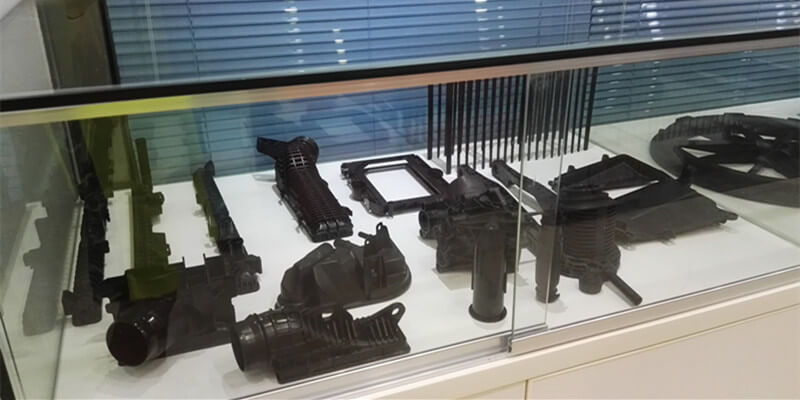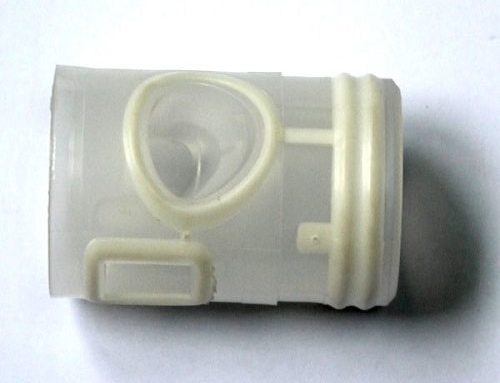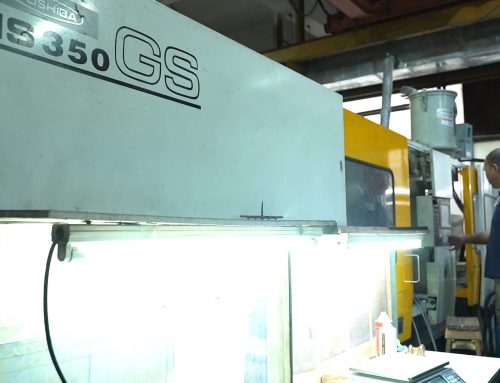Haifu Mould have discussed a lot of process of plastic injection mould design before, and one of them mentioned drawing injection molding assembly. This is the work to be done before mold is made, just like building a house with same as house drawings. Mold drawing requires a finer grasp of size. This time, Haifu Mould will take everyone to learn how to draw mold drawing and what details it needs to pay attention to.
First of all, Haifu Mould should tell everyone that before drawing injection molding assembly drawing, process drawing should be drawn, it must meet requirements of parts drawing and process data. Size guaranteed by next process shall be marked with words “process size” on drawing. Moreover if, after molding, no other machining is performed except for repair of burrs, process diagram is exactly same as workpiece drawing. However, it is best to mark part number, name, material, material shrinkage rate, drawing ratio, etc. under process diagram. Usually process picture is on injection molding assembly drawing.
We divide drawing of mold diagram into five major steps:
Draw final assembly structure
Draw final injection molding assembly drawing as much as possible with a 1:1 ratio, starting with cavity and drawing main view at the same time as other views.
Injection molding assembly drawing should include following:
- Mold forming part structure
- Structure of gating system and exhaust system.
- Parting surface and parting mode.
- Outline structure and position of all connectors, positioning and guides.
- Mark cavity height dimension (not required, as needed) and overall dimensions of mold.
- Auxiliary tools (remove unloading tools, calibration tools, etc.).
- Program all part numbers in order and fill out schedule.
- Label technical requirements and instructions for use.
Technical requirements content of injection molding assembly drawing:
- Performance requirements for certain systems of mold. For example, assembly requirements for ejector system and slider core structure.
- Requirements for injection molding assembly process. For example, fitting gap of bonding surface of parting surface after mold is assemble should be no more than parallelism requirement of upper and lower sides of mold of 0.05 mm, size determine by assembly and requirement forsize are point out.
- Mold use, assembly and disassembly methods.
- Anti-oxidation treatment, mold number, lettering, marking, oil seal, storage and other requirements.
- Requirements for test and inspection.
Draw all parts drawing
Order of drawing parts drawing from injection molding assembly drawing should be: first inside and then outside, first complicated and then simple, first forming parts, then structural parts.
- Graphics requirements: Be sure to draw in proportions, allowing you to zoom in or out. View selection is reasonable, projection is correct, and layout is proper. In order to make processing patent number easy to understand and easy to assemble,graphics should be as consistent as possible with final injection molding assembly drawing, graphics should be clear.
- Dimensioning requirements are uniform, centralized, orderly, and complete. Order of dimensioning is: For instance, first mark main part size and draft angle, then mark fit size and full size. Mark fit size on non-main part drawing and then mark full size.
- Surface roughness. Mark one of the most applied roughnesses in upper right corner of drawing, as indicated by “remaining 3.2.” , Similarly, other roughness symbols are marked on each surface of part.
- Other contents, such as part name, mold drawing number, material grade, heat treatment and hardness requirements, surface treatment, graphic scale, free-size machining accuracy, technical description, etc. must be correctly filled out.
- Proofreading, reviewing, drawing, and drying.
Content of self-proofing is:
Relationship between molds,their parts and plastic parts drawings
Whether material, hardness, dimensional accuracy, structure. of mold and mold parts meet requirements of plastic parts drawings.
Plastic parts
Whether flow, shrinkage, weld line, crack, and draft of injection molding materials affect performance, dimensional accuracy, and surface quality of plastic parts. Moreover whether pattern design is insufficient, processing is simple, and shrinkage rate of molding material is select correctly.
Forming equipment
Whether injection volume, injection pressure, and clamping force are insufficient. Whether Installation of mold, south core of plastic part, mold release have problem, nozzle of injection machine and mouthpiece are in proper contact.
Mold structure
1). Whether position of parting surface and precision of finishing meet requirements, will there be any flashing, and whether plastic part can be left on the side of mold with ejector device after mold is opened.
2). Is demoulding method correct? Moreover is size, position and quantity of promotion rod and push tube appropriate? Will push plate be catch by core and will not cause molded part to be scratch.
3). Mold temperature adjustment. For example, power and quantity of heater; whether flow line position, size and quantity of cooling medium are suitable.
4). Method of processing undercut of plastic part, whether mechanism for removing concave side is appropriate. For example, whether slider and push rod in core pulling mechanism of inclined guide column interfere with each other.
5). Whether position of pouring and exhaust system is appropriate.
Design injection molding assembly
1). Is placement of each mold part on injection molding assembly drawing appropriate? Is it clear whether there is any omission?
2). Part number, name, production quantity, whether part is made in-house or outsourced, whether it is standard or non-standard parts, correction processing and allowance of parts processing precision, high-precision size of molded plastic parts, injection molding materials of mold parts, heat treatment, surface treatment, whether surface finishing degree is marked, description is clear.
3). Main parts of parts, working dimensions and matching dimensions of molded parts. Moreover size figures should be correct and manufacturer shouldnot converted by manufacturer.
4). Similarly, check view position of all parts drawing and injection molding assembly drawing, whether projection is correct, drawing conforms to national standard of drawing, and is there any missing size.





